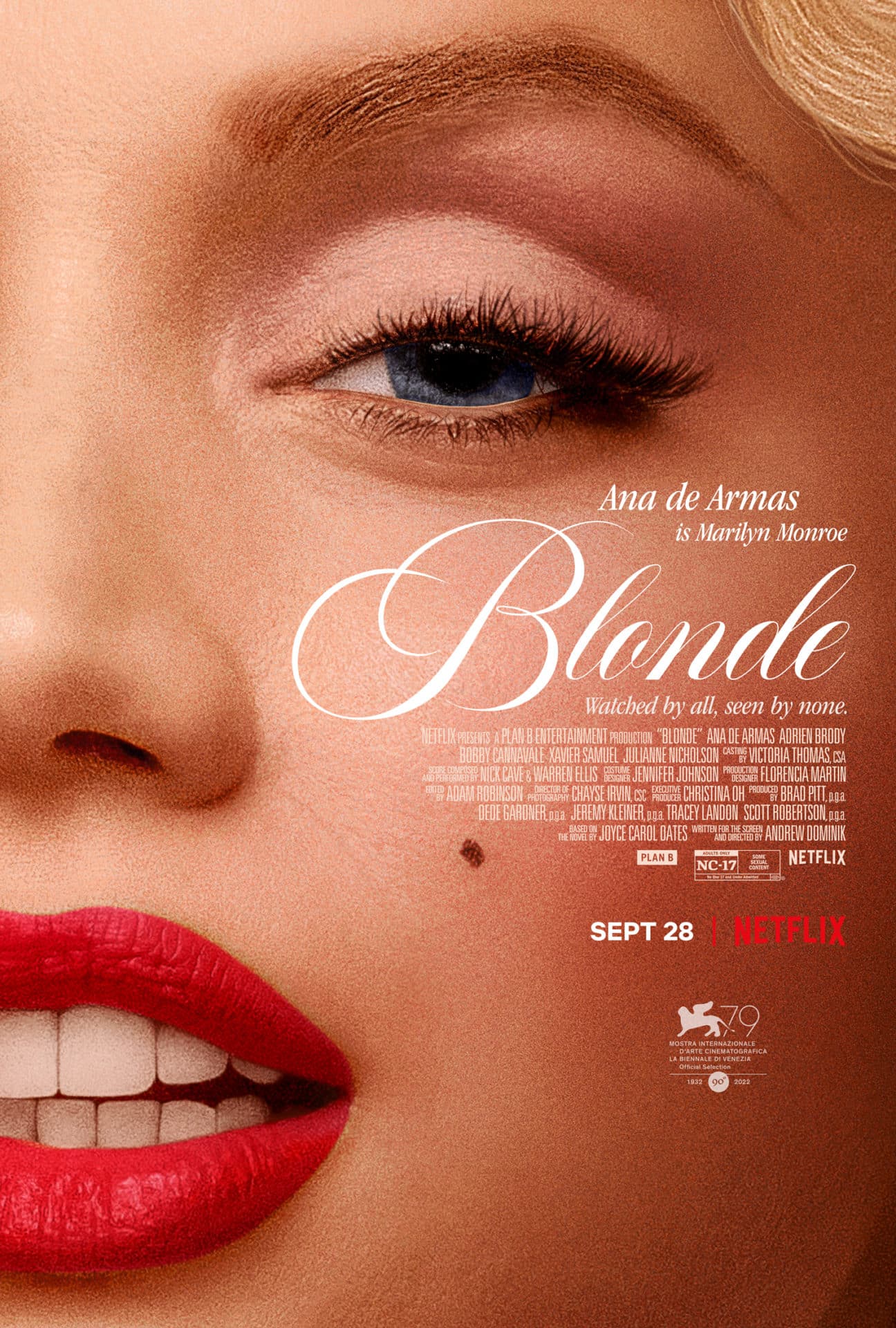
- Starring
- Ana de Armas, Adrien Brody, Bobby Cannavale
- Writer
- Andrew Dominik
- Director
- Andrew Dominik
- Rating
- R (Canada), NC-17 (United States)
- Running Time
- 167 minutes
- Release Date
- September 28th, 2022 (Netflix)
Overall Score
Rating Summary
Leading up to its release following a premiere at this year’s Venice Film Festival, no film has arguably been met with more controversy than Blonde. A film featuring the legendary Marilyn Monroe, it is by no means a biopic but convincing enough audiences of this fact appears to be a losing battle. That being said, taking Monroe in a different direction that has been accused as exploitative which will undoubtedly rub a large portion of audiences the wrong way because she is such a storied figure in their lives. As a film, Blonde and its subject matter will not be for everyone and will surely trigger some audiences, rightfully earning it R and NC-17 ratings in Canada and the United States respectively. While it is definitely exploitative, its bigger issue is that it is simply a mess that has absolutely nothing to say over the course of its nearly 3-hour running time. That running time, even though most will likely be watching the film on Netflix who offer a pause option, will be a point of a contention above all else. Nevertheless, Ana de Armas delivers a stellar performance as Monroe in spite of her accent. However, it essentially doesn’t matter. At the end of the day, the film will only go as far as she can take it.
Blonde, based on the book by Joyce Carol Oates, is a fictional telling of the life of actress, singer, and model with the stage name of Marilyn Monroe (de Armas) otherwise known as Norma Jeane Baker. Raised in the shadow of Hollywood by troubled her single mother Gladys (Julianne Nicholson), Monroe’s trajectory was not a simple one. Feeling like strung together bits and pieces rather than a straightforward flowing story, the film wasn’t nearly as compelling to watch as it could have been as it kept her at arm’s length. Being a young woman in the early to mid 1940s came with its own set of challenges as they were seen more as commodities than people, used for her body and appearance rather than for her skills, Monroe started off as model who posed primarily for magazines and advertising campaigns including some more provocative spreads. The objectification of Monroe carried over to her acting career in terms of roles and treatment from various producers, writers, directors, and studio executives who looked to control every aspect of her life to protect their investment.
Monroe had a support system of sorts in the form of the offspring of a few actors from the Golden Age of Hollywood but they unfortunately spent too much time on the periphery before disappearing altogether. Ultimately wanting to be taken more seriously as an actress and be given more serious roles, she fought against her doubters who would rather keep taking advantage of her sex symbol status by typecasting her in the kind of roles she found demeaning. Instead of accepting being typecast, she continued taking acting classes to help hone in on her craft. However, getting that acceptance was still a battle. After a while, the character of Monroe merely became a persona for Baker to hide behind and disassociate from things that made her uncomfortable in her professional life though over the course of the film, she would do the same in a personal life that would become increasingly tumultuous going from husband to husband. With fame came confidence and self-assuredness, she began to stand up for herself which unsurprisingly gave her the reputation of being difficult to work with.
In the end, even with all all Monroe’s success as her star was on the rise, there was still something missing as a feeling of loneliness laid below the surface that seemed to be at the root of who she was. While heartbreaking, the emotion never quite came together. Limited by the film’s messy structure, using surrealism and imagery to convey emotion, it depends on de Armas’ performance to drive it home. To her credit, she keeps the film watchable but there’s only so much she can do. Meanwhile, Nicholson’s strong performance as Gladys also helped to do some heavy lifting early on though yet again, Blonde could not sustain that momentum. Where it truly excels is technically with beautiful cinematography and a thematic score do a great job at setting the stage. It’s just a shame that what happened on that stage was so dull which is aggravated by the long running time.
Blonde may turn off a large portion of Marilyn Monroe fans but it also barely works as a character study. As Ana de Armas’ star continues to rise, fans of the actress may flock to the film. However, it is unlikely to find much of a following beyond that.
still courtesy of Netflix
If you liked this, please read our other reviews here and don’t forget to follow us on Twitter or Instagram or like us on Facebook.
Where to watch Fire Island

The EIC of the coincidentally-named keithlovesmovies.com. A Canadian who prefers to get out of the cold and into the warmth of a movie theatre.
